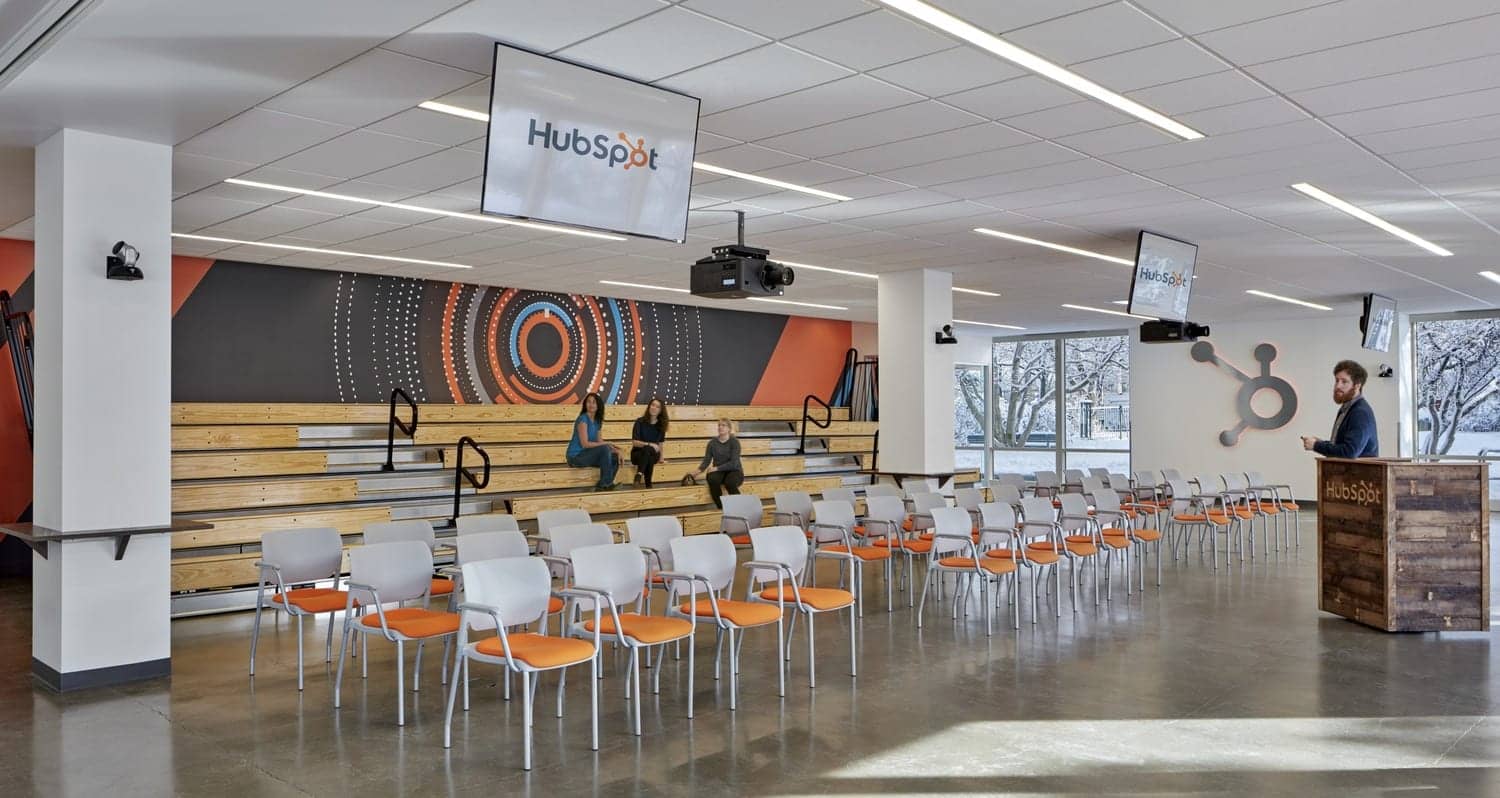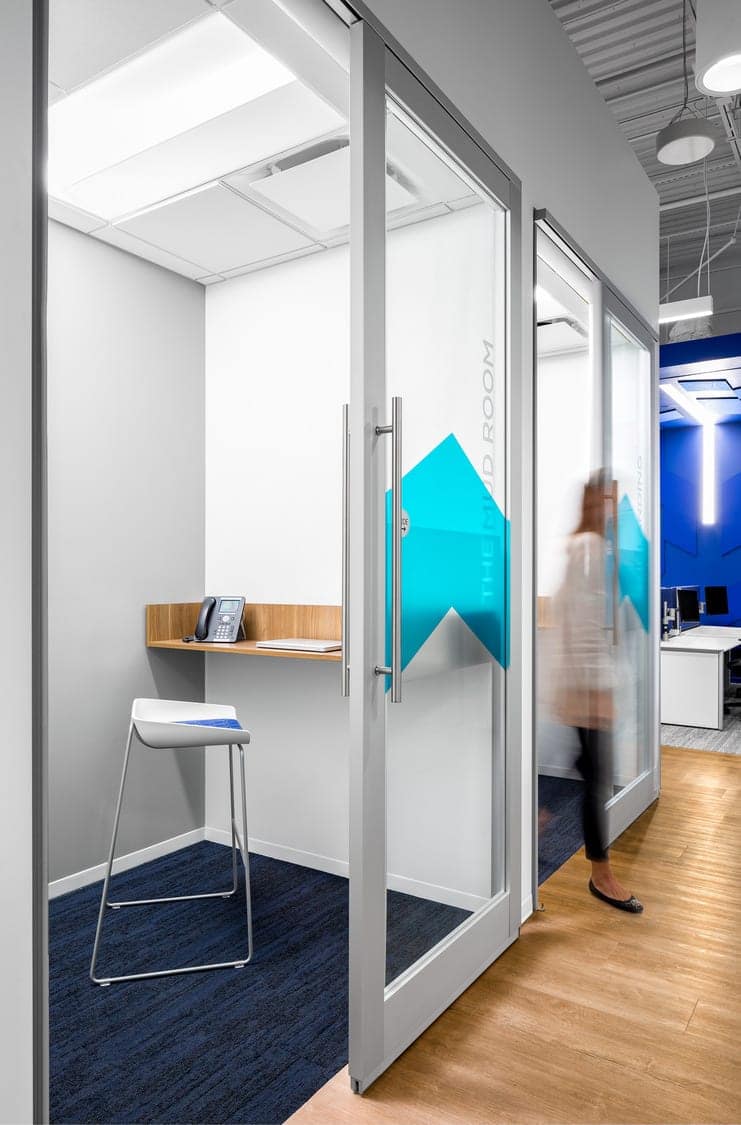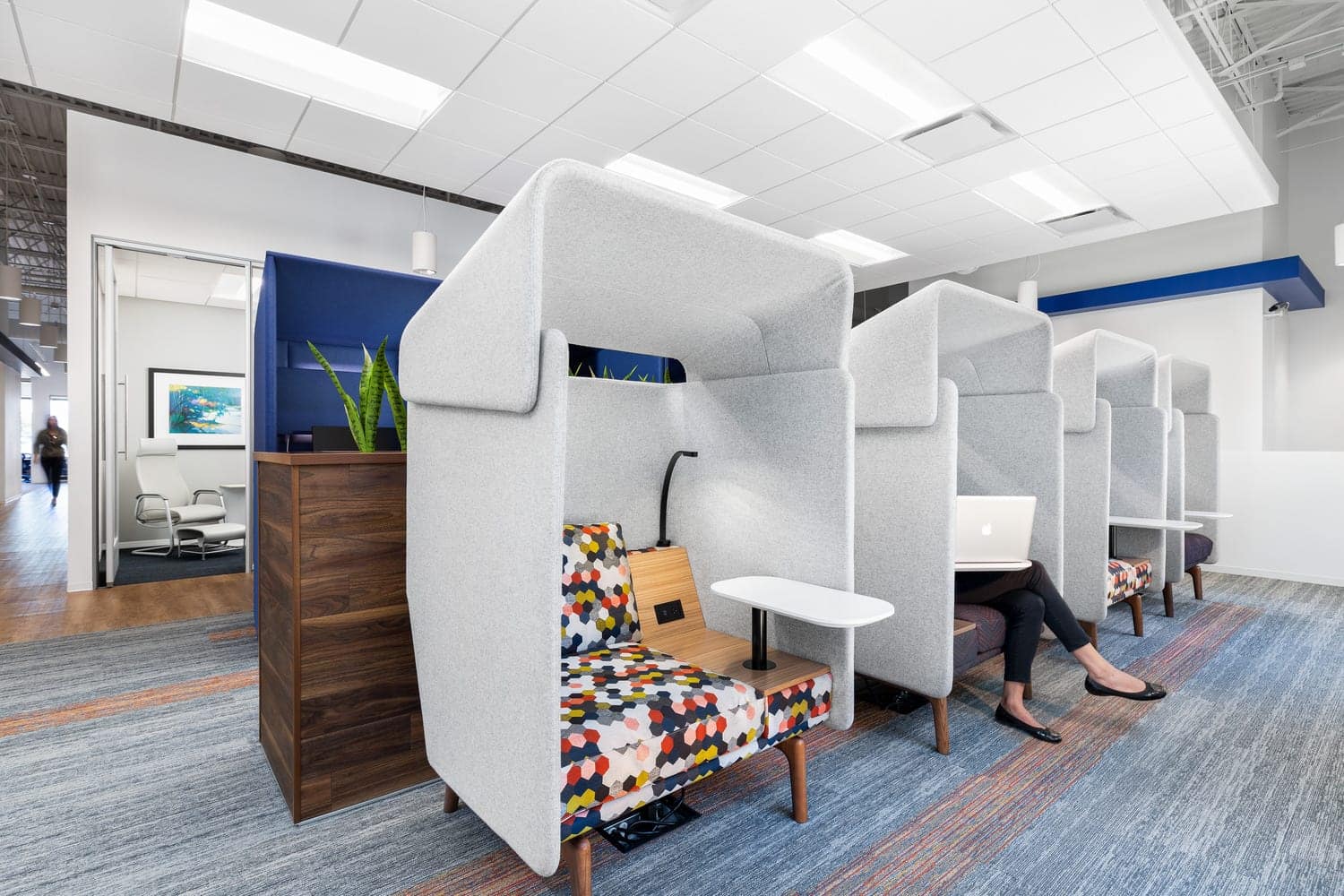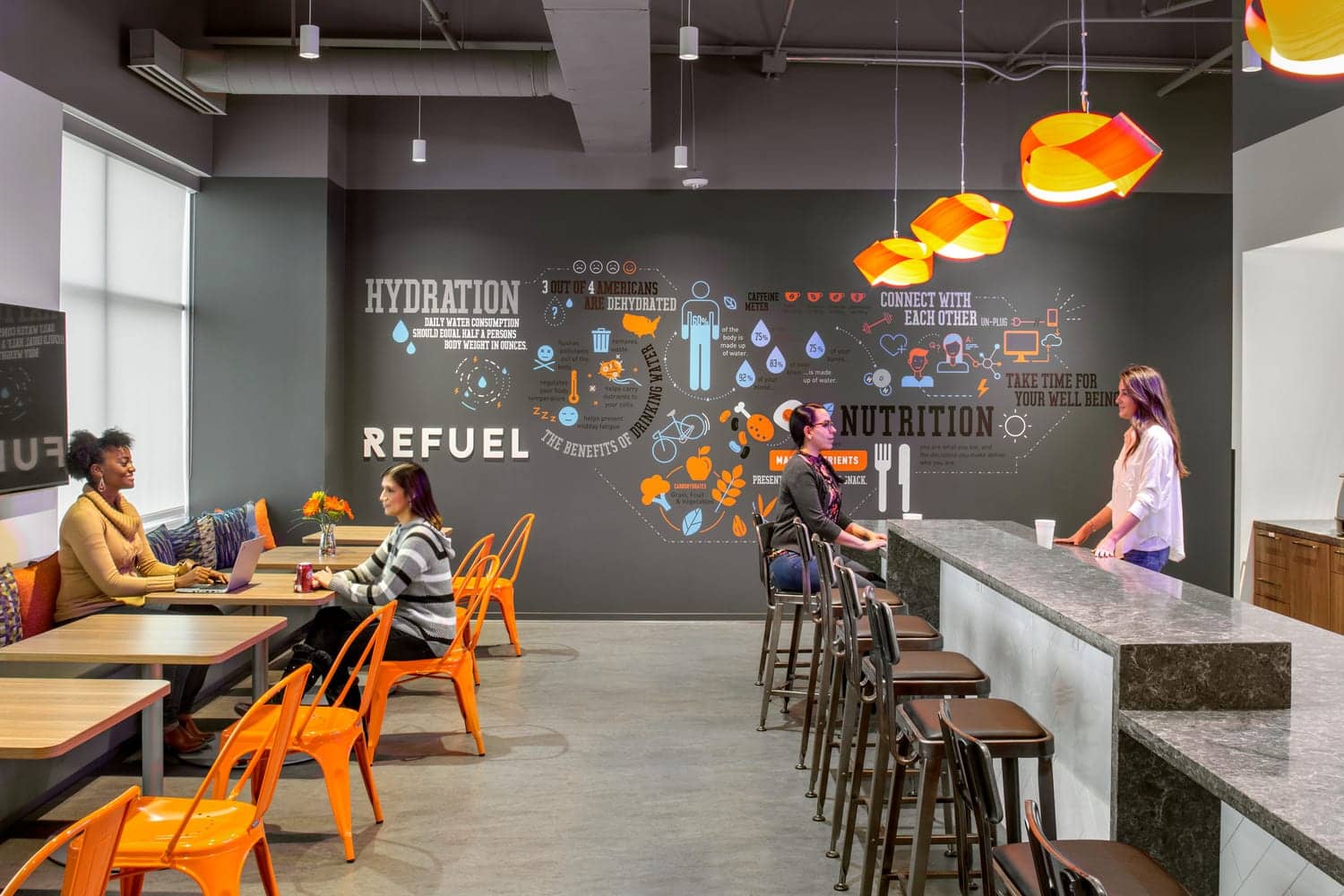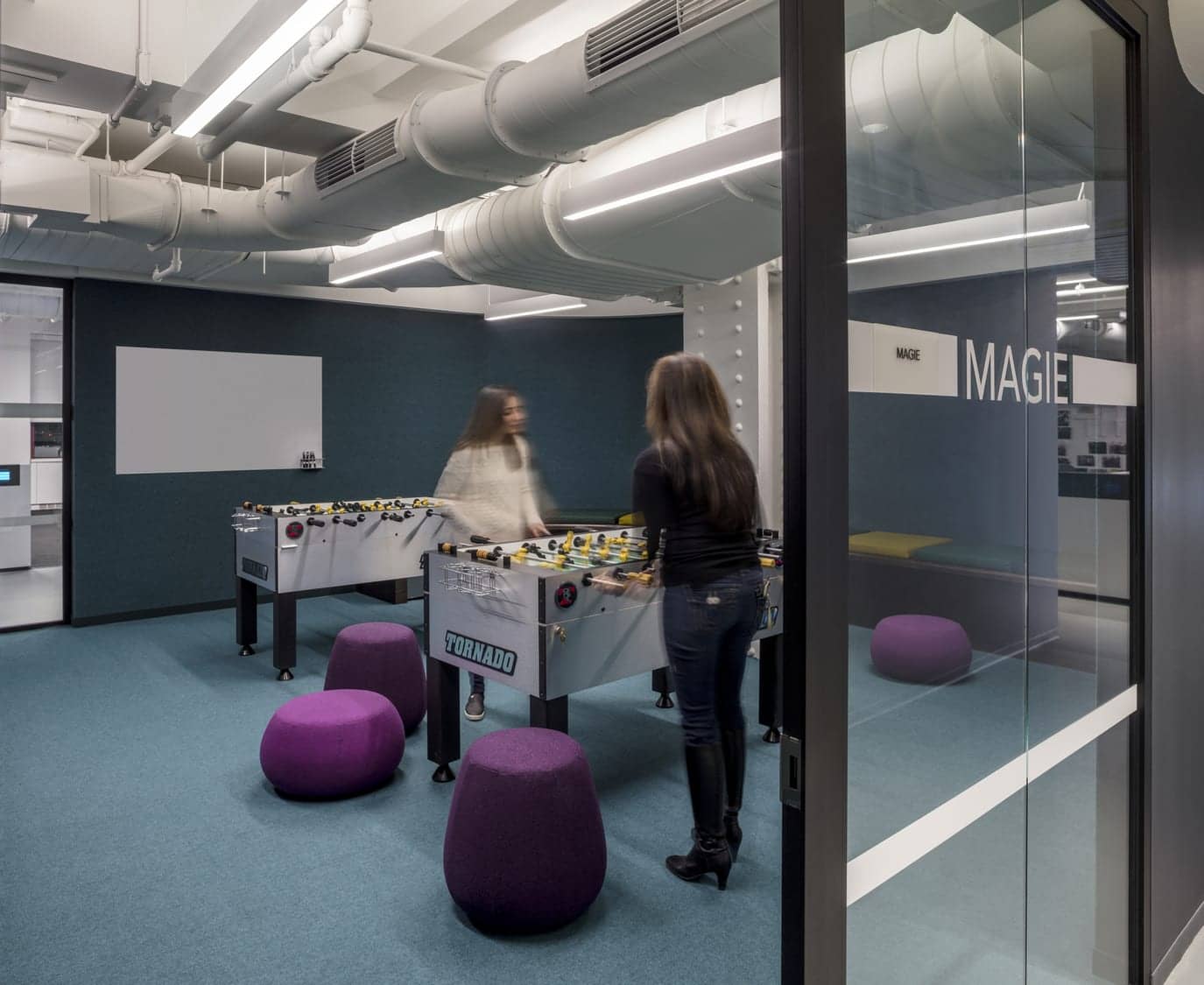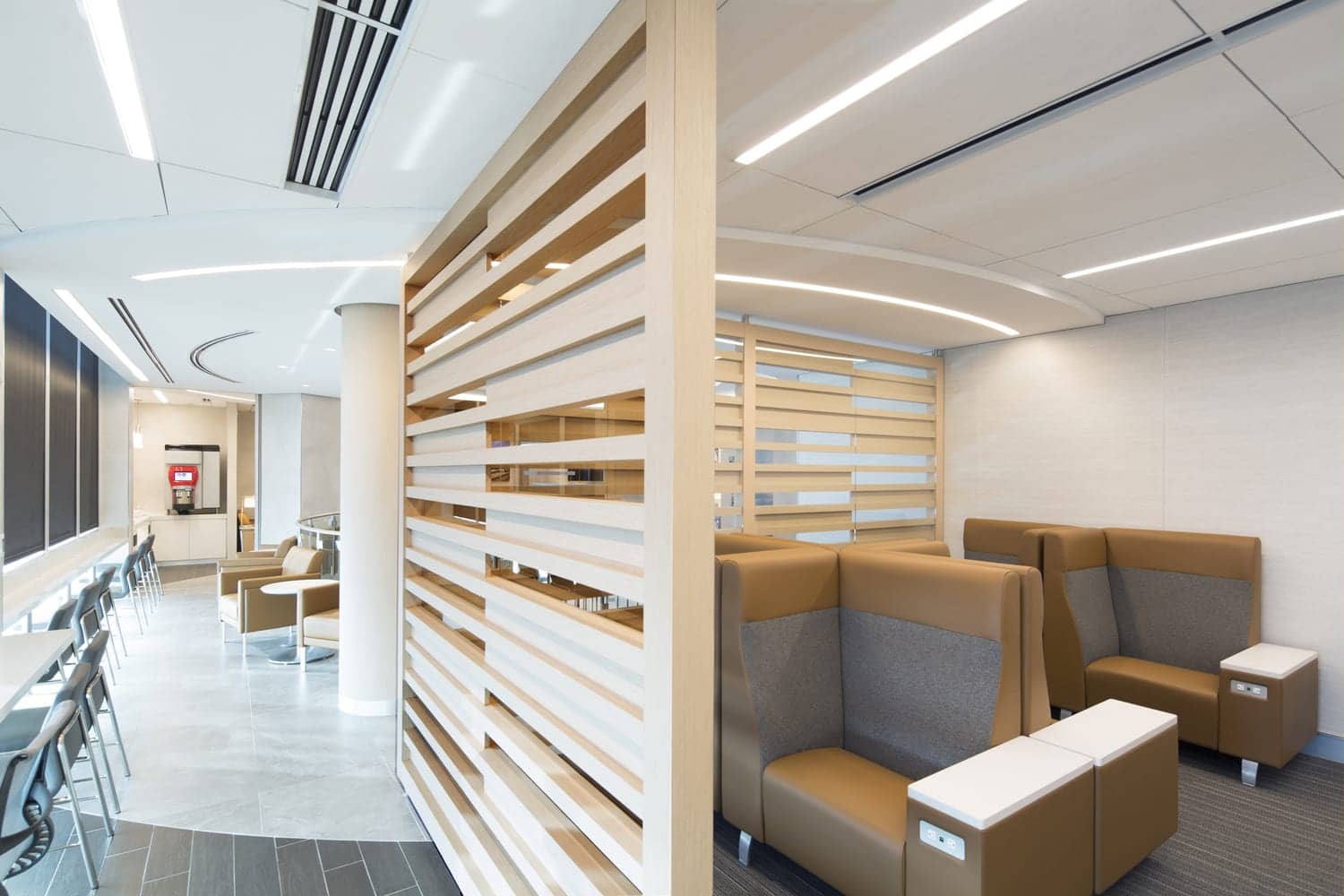More...
If there's one commonality behind the organizations that work with IA Interior Architects to develop workplace strategy, architecture, or design solutions, it might be that all of our clients understand the importance of employee retention. And with good reason — some estimates place the cost of replacing an employee at 20% - 40% of that employee's annual salary (which doesn't even account for the subsequent costs associated with the loss of knowledge, impact on the work environment, etc.).
Given this, it makes sense that HR-managers and other strategic leaders are ever-vigilant of new solutions that might help to reduce the loss of employees and account for the costs of the knowledge the prior employee took with them. One trending solution that more and more employers are looking towards is upskilling - the practice of investing in a systematic program of employee training or development as a means of lowering recruiting costs or increasing employee retention and satisfaction.
As we develop more work spaces for organizations that take pride in their upskilling initiatives, we set out to outline the design features that support such efforts.
Designated Areas for Group Upskilling
Group training, a central tenet to upskilling, can be deceptively complex. Unlike other modes of employee development, this one may utilize both internal and external resources, which means that whatever space is put aside for this form of upskilling should be useful for employees and professional trainers/lecturers alike. In the example of Hubspot (above), we were able to create a space that had multiple end-uses. The space was well-suited for various forms of A/V equipment, including speaker- and audience-facing monitors, adjustable lighting, as well as room for multiple projectors and easily-accessible ceiling and wall speakers. The use of movable chairs in addition to deployable stadium seating gave the space an enormous amount of flexibility, allowing presenters to easily change the space to best suit their needs. Natural lighting and a strong attention to acoustics was a must in making sure this space was as productive for upskilling efforts as possible.
Ultimately, this project was a success because all parties involved were able to determine the client's needs at the onset of the project, and the IA Strategy team was able to develop the concepts employed in the new space in tandem with our designers. As IA undertakes similar projects in the future, it is expected that there will be an increased incorporation of newer media technologies (think Virtual Reality), as well as the use of new materials that allow for improved sound management, and more reliance on remote light and sound management systems.
Designated Focus Areas for Self-Teaching
More common than group learning opportunities will be the reliance upon apps, knowledge bases, and training modules that help employees to upskill in their own time and at their own pace. Whether one agrees with existing models that identify different learning styles or not, one will be hard-pressed to find educational theorists that don't discern between those who prefer to learn in group settings vs. more solitary learners. In implementing an upskilled workplace and deciding which programs best suit the space and workforce, it's best to take into consideration the three following determinants:
Privacy and Noise Control
Solitary learners will benefit from having access to spaces devoid of normal workday distractions. Before implementing a solitary upskill program, it's best to identify if the available space provides an environment that's ideal for long periods of intense focus.. This can mean partitions, noise cancelling materials, designated nooks, etc. - anything to help employees concentrate.
Mobility
The number one threat to an upskill program that has already been implemented is time (or lack thereof). Make sure that employees have designated time in their schedule for self-training, but then also ensure that when that time comes, they're able to easily navigate to the appropriate areas. Mobile work stations, multipurpose meeting spaces, careful foot traffic planning, and even wayfinding signage can all have an impact on an employee's ability to transition easily from their work role, to a training role, without spending undue time searching for available spaces, traversing the office, or transitioning their work area.
Scheduling/Interactivity
Making sure that employees have access to designated self-teaching areas is an important first step. Implementing a room reservation system allows employees to quickly and easily reserve learning spaces while minimizing time spent simply looking for availability. There are several software suites and apps designed for this very purpose, and several ways in which the interior architecture and design team can contribute to the success of these programs, whether it's designing helpful EGD and wayfinding, or simply making sure that aspects of the chosen scheduling tool are accounted for in things such as signage, occupancy sensors, or kiosks.
Monitoring
It's important to give the HR team as well as employees the tools they need to set S.M.A.R.T. goals, and the easiest way to do this is to make sure progress is able to be monitored. This way, employees can hold themselves accountable for maintaining progress, while HR can step in to support employees when progress comes to a standstill.
When it comes to a designated self-teaching area, this monitoring can take many forms, so it's important to know if this functionality comes within the platform of choice, or if there's something the business' design firm can do to augment these efforts. Examples include easily updated, branded whiteboards, interactive LED displays, digital whiteboards, and designated touch screen displays.
The Lunch and Learn
While the kitchen is often too distracting a space for vital learning to occur, the lunch and learn is a time-honored tradition in many industries. That being said, quite a few notable organizations have embraced this tactic as one which can improve employee engagement (not to mention participation).
The design team can accommodate for this type of learning in a handful of ways when it comes time to consider how the lunch and learn is incorporated into the employee training schedule and an organization's culture, including:
- Allowing for increased interactivity via screens or projection walls that make it convenient for presentations to be made, and videos to be watched.
- Improving kitchen acoustics so that the space is less distracting for employees who aren't participating in the learning event, and sound quality is better for those who are.
- Seating that allows for a view of an individual or a raised dais to make a presenter more visible.
- Allowing for A/V equipment or even creating spillover outdoor space for larger audiences.
Incentivizing Progress
As employees continue to upskill, it's important to incentivize their efforts. There are thousands of ways to incorporate this into the upskilling strategy, and several that might involve input from the architecture and design team. Provide recognition of employee's efforts via the use of an interactive leaderboard, or measure the progress of entire teams via the use of touchscreen wall displays. Putting learning front and center in the creation of a space can send a message to those both within and outside of the business, letting the world know that knowledge is valued in the workspace, and ensuring employees that personal growth is prioritized.
Allowing for Virtual Training
Upskilling employees might have to take place over dozens or even hundreds of offices worldwide. In some cases (i.e. live seminars), this may mean accommodating for tools such as live video webinars and even virtual reality meetings. When evaluating what solutions are right for the business, be sure to work with the design team to see if the space is right for implementing such programs, and what modifications need to be made to turn what once was a meeting space into a functioning recording studio for live trainings. Virtual training can take many forms, and can include technology like interactive virtual whiteboards, video recording tools, etc. It's important to consider how making such changes might impact the workplace.
Playing Host
Depending on the organization's "come to the mothership" philosophy, or the hands-on nature of any training, the office may need to play host to trainers (either in-house or from outside of the organization). Providing access to some creature comforts not only eases the stress on these integral members of the team, but in many cases makes them more productive by offering access to amenities they normally wouldn't expect while traveling such as dedicated rest areas, business call or focus rooms, or even something as simple as a coffee bar.
Interested in Learning More?
If you enjoyed learning about some of the ways in which IA has designed for an upskilled workforce, you might enjoy learning a little more about our Workplace Strategy team. Click the link below to find the full story.
Considering implementing an upskilling program? Learn 6 things you should consider, and how your design team can help.
